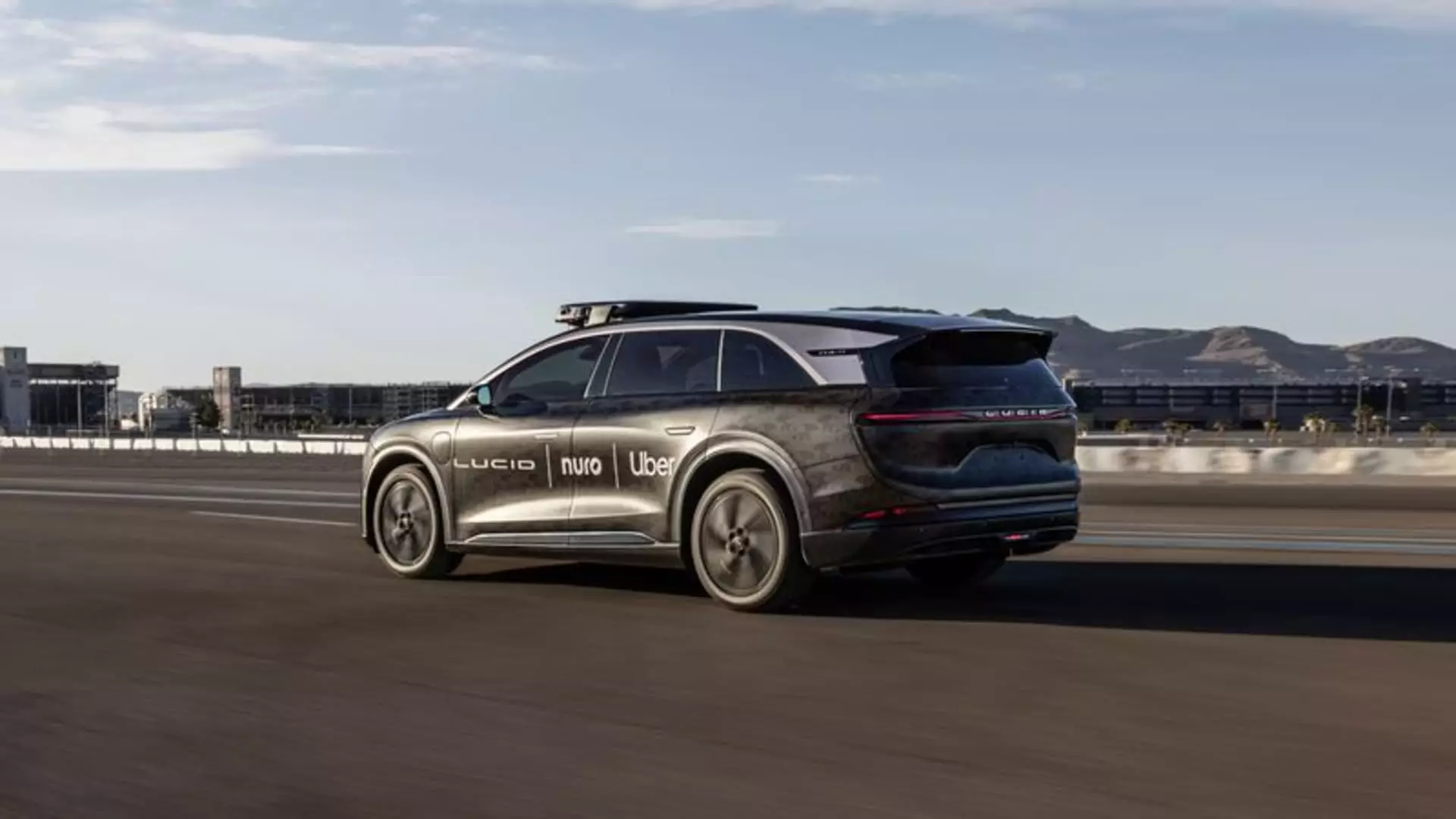In recent years, the transportation landscape has been engulfed by a relentless push toward automation, promising unprecedented convenience and efficiency. Major corporations are investing billions into robotaxi fleets, boldly asserting that self-driving cars will soon dominate city streets. While this ambitious vision aligns with a progressive push for innovation, it warrants a critical eye. The recent alliances among Uber, Lucid, and Nuro reveal a mindset eager to push technology forward at a rapid pace, perhaps prematurely. Instead of meticulously assessing the societal costs and infrastructure readiness, these companies seem driven by the allure of market dominance and investor excitement.
The core narrative revolves around transforming urban transit, reducing costs, and enhancing accessibility. However, underneath these lofty claims lies a complex web of technical, regulatory, and ethical challenges that are often glossed over. The push to deploy over 20,000 robotaxis in the next six years embodies this momentum—yet it raises questions about whether the industry is rushing into a revolution before it can guarantee safety and reliability. Their optimistic tone belies the substantial risks involved, suggesting a sometimes naive faith that technological breakthroughs alone will surmount all hurdles.
Financial and Strategic Motivations Over Public Welfare
The collaboration between Uber, Lucid, and Nuro isn’t simply about technological innovation; it’s a calculated move to carve out a lucrative slice of the future mobility market. Uber’s $300 million investment in Lucid demonstrates a desire to align itself with cutting-edge electric vehicle technology, betting that the EV market will expand along with autonomous driving. For Lucid, this partnership offers a platform to reach a broader consumer base, potentially transforming their nascent brand image into a key player in a high-stakes industry. Meanwhile, Nuro’s self-driving solution is positioned as an elite product designed for mass adoption.
However, this enthusiasm for rapid expansion often overlooks the true costs—both financial and social. The move to deploy driverless taxis in major urban centers risks exacerbating socioeconomic inequalities. Will autonomous fleets primarily benefit affluent city-dwellers, leaving lower-income neighborhoods behind? There’s a danger of creating a two-tiered system where convenience is reserved for those who can afford it, further widening societal divides. Investor-driven motives tend to prioritize growth and profitability over public safety and equitable access. With safety concerns still under scrutiny, such as the recent scrutiny of Tesla’s Autopilot, aggressively deploying Level 4 autonomous vehicles could backfire, causing accidents, regulatory crackdowns, or public distrust.
Technological Hype Versus Reality
Even as the companies trumpet their technological advances—such as Nuro’s Level 4 self-driving system capable of operating under normal conditions—the reality is more nuanced. The technology that promises to revolutionize urban mobility remains unproven at scale, especially when factoring in unpredictable weather, complex traffic scenarios, and pedestrian behavior. The industry’s portrayal of autonomous vehicles as foolproof is overly optimistic; reality suggests a more cautious timeline.
Furthermore, just because Lucid’s vehicles boast a 450-mile range and a sleek design doesn’t mean they are ready for the chaotic complexity of city streets. The focus on innovation can sometimes serve as a smokescreen for technical delays, unanticipated failures, or regulatory barriers. While companies like Waymo have made strides, they are still working through the kinks—yet the current competitive urgency pressures others to rush their launches. Consumer trust in fully autonomous cars is still fragile, and incidents involving partially autonomous systems serve as stark reminders that society isn’t yet prepared for mass adoption.
Is This Accelerated Race Truly the Future? Or a Risky Gamble?
In the grand scheme, the push toward deploying thousands of robotaxis signals a willingness to gamble with societal safety for commercial gains. The rapid pace of technological deployment, driven by investor hype and strategic ambitions, might be short-sighted. It’s essential to question whether the infrastructure, legal frameworks, and public acceptance are truly prepared for such a transformation.
There’s an underlying assumption that autonomous vehicles will seamlessly plug into existing urban landscapes, but this is far from certain. Urban environments are inherently unpredictable, and the technology’s current limitations mean that failures—sometimes catastrophic—remain possible. The acceleration of these initiatives disregards a fundamental need for rigorous testing, comprehensive regulation, and gradual integration.
While the promise of cheaper, safer, and more efficient transportation is enticing, history suggests that technological revolutions often come with unintended consequences. Overestimating current capabilities while underestimating societal adaptation could lead to setbacks, accidents, and erosion of public trust. Instead of riding the wave of disruptive innovation blindly, a more measured approach—grounded in safety, fairness, and practicality—is necessary if autonomous ride-hailing is to truly serve society’s best interests.

